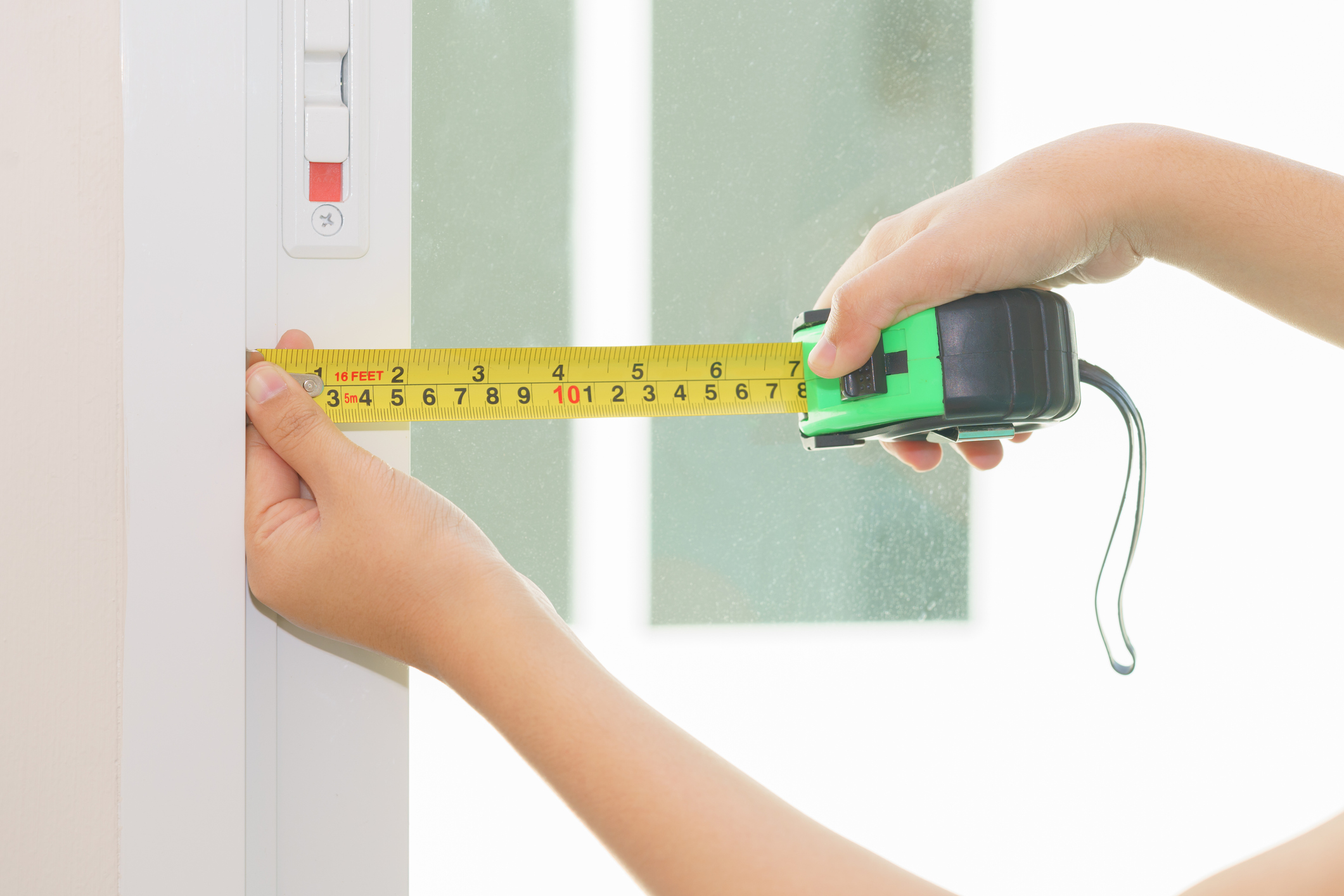How to measure for wallpaper
Our handy guide on how to measure for wallpaper to ensure the perfect fit will help give your walls the wow factor


Measuring for wallpaper accurately is one of the decorating techniques you have to get exactly right to get a smart, professional-looking finish.
Removing wallpaper may be the first step in your project but, after that, measuring correctly is essential.
‘Wallpapering a room is such an easy way to bring an instant splash of color and personality,’ says Kate French, creative director at Dado, ‘and there is such a wealth of designs available, from large-scale bold prints to smaller scale stripes and florals; serene and soft neutrals to more vibrant pops of color. Whether it’s a wall or two or all over the room, an afternoon spent wallpapering can bring a radical and rewarding refresh.’
Painting over wallpaper is an option but, if you prefer to select a new design, you need to know how much is necessary. ‘It’s important when ordering wallpaper to check you have the correct amount,’ adds Kate, ‘and we recommend consulting our on-screen calculator that is presented alongside your chosen design to help calculate the amount. Every design is different, and those with a larger pattern repeat will create more wastage, so always check the calculation for your chosen design.’
How to measure for wallpaper
Measuring for wallpaper is something you really want to get right first time, so take your time, check you know how to read a tape measure correctly, and measure two or three times before cutting to ensure you have the correct measurements – and that goes for applying peel and stick wallpaper as well. This is especially important when wallpapering textured walls.
1. Check the width of the wallpaper and the wall
One of the top wallpapering tips is to avoid making assumptions about the width of the wallpaper. ‘As a general rule of thumb, begin by checking the width of your chosen paper, as this can vary,’ says Kate French. ‘Then measure the width of the wall you are papering.'
2. Do the math to calculate the drops
'Now divide the width of the wall by the width of your chosen wallpaper,' advises Kate. 'This will calculate the number of "drops" you will need.
Design expertise in your inbox – from inspiring decorating ideas and beautiful celebrity homes to practical gardening advice and shopping round-ups.
3. Calculate the drops per roll
'Next, measure the full height of the wall you wish to paper and then divide the length of the roll by the height of your wall. This will calculate the number of "drops" you will have per roll.
'Don’t forget to add the height of the pattern repeat to every second drop, which will allow for pattern matching.'
4. Calculate the number of wallpaper rolls you'll need
'Finally, divide the total number of drops required by the number of drops you can get per roll to give you the number of rolls needed,' says Kate. 'If you end up with a few extra pieces, wallpaper makes for fantastic drawer liners or notebook covers.’
How to measure awkward areas for wallpapering
If you live in an older property or conversion, you may be faced with sloping ceilings, coving or other architectural details that can make measuring up for wallpaper ideas more tricky.
‘Take your measuring tape and note down the widest width and the highest height of your wall,’ says Callum O, production executive at Hovia. ‘You only need wall measurements so don’t include any baseboards or trims. We recommend purchasing your wallpaper one or two per cent larger than the dimensions you need to allow for adequate excess paper for trimming. This will make installation easier and safer.
‘It's important to note that different wall types will require different methods of measuring,’ adds Callum. ‘For instance, with a sloped wall you should measure the longest and widest parts only, ignoring any slopes. If you're measuring multiple walls, you should combine the widths of each wall and submit one overall measurement when purchasing.’
How to measure for wallpaper excluding windows and doors
This all seems straightforward enough but what wallpapering around a window and door?
‘When you are taking measurements, don’t exclude windows and doors,’ says Stuart McKenzie, decorating specialist at Brand McKenzie. ‘You’ll end up with extra wallpaper but this won’t be wasted. Mistakes happen during and after decorating. If you have a roll of wallpaper in reserve, you can take a drop out and splice another drop in. You’ll never see the difference if this is done well. I recommend double checking any measurements with your decorator. This will prevent over or under ordering.’
What is the length of wallpaper on a roll?
Wallpaper on a roll tends to measure 33ft (10m) long and around 21in (53.5cm) wide. An average height room will typically give you three drops per roll.
How do you measure wallpaper for a ceiling?
If you are wallpapering a ceiling, the easiest way to measure up is to:
1. Divide the width of the ceiling by the width of the wallpaper to get the total 'drops' (ie, width of the ceiling is 210in, divided by width of the roll at 21in = 10 drops needed).
2. Then measure the length of the ceiling and divide the length of the roll by is number. This will calculate the number of 'drops' you will have per roll (ie, length of roll is 30ft, divided by length of ceiling at 10ft = three drops per roll).
3. Now divide the total number of drops required by the number of drops you can get per roll to give you the number of rolls needed (ie, with 10 drops needed and three drops per roll possible, you will need four rolls of wallpaper).
What are batch numbers?
When buying wallpaper, always buy from the same batch number to ensure the color match is as close as possible; it may differ noticeably batch to batch. ‘However, you can still get variation within the same batch between the first and last rolls printed, especially if the run was a large one,' says Stuart McKenzie, decorating specialist at Brand McKenzie.

Hayley is an interiors journalist, content provider and copywriter with 26 years experience who has contributed to a wide range of consumer magazines, trade titles, newspapers, blogs and online content. Specialising in kitchens and bathrooms, she has twice won the CEDIA Award for Best Technology feature. Hayley writes for H&G about kitchens, bathrooms, cleaning, DIY and organizing.